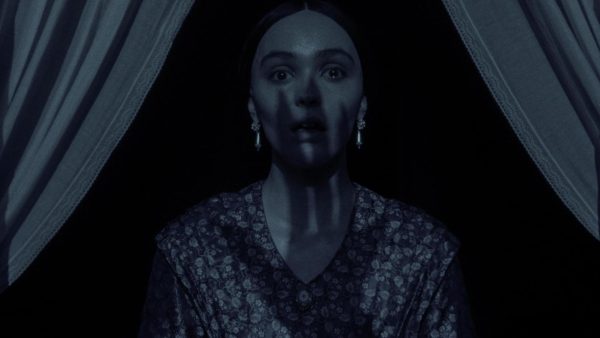At the end of 2024, “Glicked” — the portmanteau of “Gladiator II“ and “Wicked“ — took both U.S. and international cineplexes by storm. As a result of the spotlight fixating on “Glicked,” other noteworthy releases have been overlooked, including Robert Eggers’ “Nosferatu,” released on Dec. 25.
“Nosferatu” is Eggers’s most recent addition to his impressive resume of ominous historical fiction films. It is also the most recent remake of German filmmaker F.W. Murnau’s 1922 vampire classic of the same title, which was a cinematization of Bram Stoker’s 1897 novel “Dracula.” While some characters’ roles and names have changed from Stoker’s novel to Murnau’s film and Eggers’s renewal, the themes and core story remain the same throughout all three.
Set in 1830s Germany in the fictional town of Wisborg, “Nosferatu” tells the chilling tale of Thomas Hutter, played by Nicholas Hoult, a young man who travels to Romania to finalize a property sale with the mysterious Count Orlok. As he sets out for the business expedition, Thomas leaves his wife Ellen, played by Lily-Rose Depp, in the care of his friend Friedrich Harding and his wife Anna, played by Aaron Taylor-Johnson and Emma Corin respectively. When Thomas arrives at the count’s castle, he quickly discovers that Orlok is an evil blood-lusting monster.

Before Thomas escapes, Orlok steals his locket containing Ellen’s hair, intensifying the unexplainable soul tie between her and the count that manifests in Ellen through psychosexual terrors. The occult scientist Albin Eberhart Von Franz, played by Willem Dafoe, diagnoses Ellen’s illness as the work of Nosferatu, the demonic, plague-bearing vampire under the guise of Count Orlok.
When Thomas returns to Wisborg, the plague is already ravaging the populace. Meanwhile, Orlok appears to Ellen and warns her that she must submit to him within three nights, or he will murder Thomas and let the plague consume the town.
As Von Franz’s research reveals, the only thing that can defeat Nosferatu is a fair maiden’s willing sacrifice. With the fate of Wisborg depending on her, Ellen is faced with the ultimate decision: Will she sacrifice everything to protect her town and loved ones, or risk letting the darkness consume them all?
Upon watching “Nosferatu,” spectators leave with a profound feeling of having survived a plague set off by a bloodthirsty monster in 1830s Germany. Eggers’ dedication to historical accuracy is partly what makes “Nosferatu” staggeringly immersive; his research into medieval Eastern European vampire folklore puts the classic cape and slicked-hair vampire to shame. In “Nosferatu,” Eggers seeks to redefine the familiar vampire imagery to a historically accurate image of a decomposing, undead corpse. To successfully bring out Eggers’ terrifying vision on the silver screen is the talented Bill Skarsgård, who is no stranger to portraying horrifying characters.
While Skarsgård delivers the performance of a lifetime, Lily-Rose Depp exceeds all expectations as Ellen. She fully embodies her character’s demonic possession, convulsing so uncontrollably and violently that it seems humanly impossible. Depp’s performance is unparalleled, but Nicholas Hoult, Emma Corrin, Aaron Taylor-Johnson and Willem Dafoe also deliver compelling and dramatic portrayals, adding additional layers of brilliance to the cast.
Apart from the superb performances, what truly completes the film is Eggers’ directorial commitment to composing scenes that are both startling enough to make viewers want to cover their eyes and so visually stunning that they cannot look away. Similarly, the grotesque but brilliant sound effects captivate the audience while being toe-curlingly unsettling.
Although the breathtaking visuals and revolting sounds persist throughout the film, they are particularly striking in the last scene. As Ellen sacrifices herself to ensure salvation for Wisborg and her loved ones, the sounds accompanying Count Orlok sinking his fangs into her flesh to feed on her blood caused collective squirming in the theater. At the same time, the scene showcases peak cinematography as Ellen dies on a bed of wilting flowers, rendering her death tragically beautiful. From a cinephile perspective, the scene is stunningly shot, perfectly encapsulating the central themes of the film — life and death — in its final moments.
Directing an almost two-and-a-half-hour movie without any moments feeling dull or irrelevant to the storyline requires immense filmmaking talent and a keen awareness of pacing. While Eggers is somewhat of a horror connoisseur, “Nosferatu” unfortunately does fall victim to those instances. Some scenes span far too long, while others feel barely explored. However, Eggers never intended for “Nosferatu” to be a blockbuster hit; instead, it is a dream project and a testament to Eggers’ unwavering devotion to treating each film as an opportunity to hone his craft further.
“Nosferatu” was, without a doubt, one of the greatest horror hits of last year. With tenacious historical research and attention to detail that engrosses the audience in the plague-ridden 1830s German scene, gorgeously executed cinematography and a cast with talent beyond words, Eggers successfully adds another gem to his already outstanding resume.


